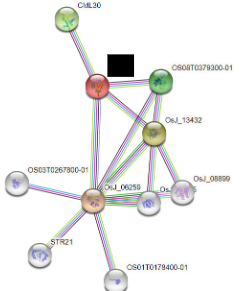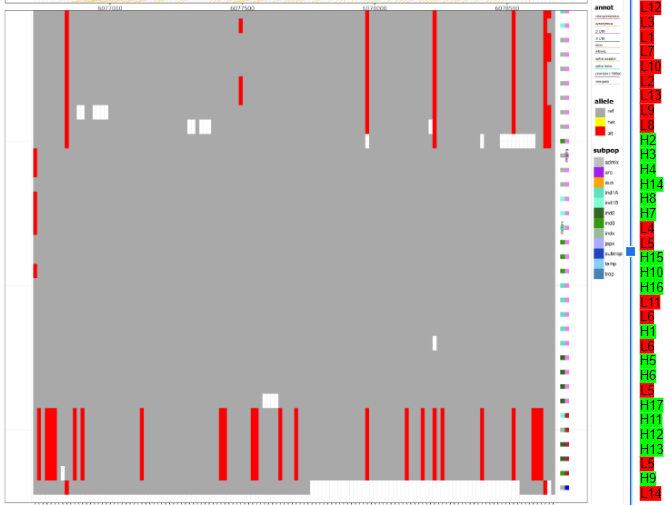During my internship at IRRI, I participated in 3 projects: analyzing rice panicles structures with P-TRAP, writing a recommendation for two rice loci for future use, and performing a total starch percent assay.
Analysis of Rice Panicle Structure
Much of the work I have done here I described in detail in two of my previous blog posts. I still am not allowed to share specifics of my results, but I did analyze 210 plants and create corrplots, biplots, and histograms of the entire data set. I then wrote up a summary of these results.
Gene Loci Recommendation
The second project I worked on was writing a short recommendation on two rice loci for future research. This project began by compiling rice loci of interest into a single spreadsheet then finding orthologous genes and the putative functions of them. Based on the putative function’s relation to flowering and rice panicle branching, Lala and I selected 7/31 gene for further research. This further research included the use of databased like StringDB and SNP-Seek, and analysis from readings in the literature. StringDB is a visual tool used to show closely related proteins or genes to the loci of interest. For example as shown below, the red orb, the loci of interest whose name has been censored, has a line connecting it to CML30 indicating a close relationship. If CML30 is found to relate to flowering in other plants, then the loci of interest may also play a role in flowering in rice.

The other program I used was SNP-Seek. Before I began this project, IRRI test grow a population of plants with a known genetic code. These plants were divided into two camps: ones that were less branching and ones that were more branching. I loaded these plants into the program as the Y axis and along the X axis is the genetic code at the loci of interest from a representative rice plant. Only areas in the gene where SNPs (Single Nucleotide Polymorphism) occur are shown. I then look at clumpings of high branching rice plants (green) or low branching rice plants (red) and see if these clumps share many SNPs that the green plants lack. As seen below there is a clump of low branching plants at the top that all share 5 SNPs. Since a SNP may cause the functioning of the gene to be changed, if many low branching plants share the same SNP and many high branching plants don’t, that gene loci probably serves a function in rice branching and the SNP may be inhibiting the proper functioning of that gene.

Source: Me
In the end, I chose two loci for future research. Because of IRRI policy, I cannot share their names, but their putative functions related to CAMK kinases and cytochrome P450 both known to play a role in flowering in other plants.
Total Starch Percent Assay
The final project I assisted with was the Total Starch Assay in the biochemistry lab. For all of my time up until now, I have been working in a cubicle on my laptop, dry lab, but now I will be in the physical laboratory, the wet lab. However, because of scheduling difficulties and running out of time in my internship, I only spent 3 days in the wet lab, so I was only able to learn part of 1 assay, the total starch assay. The goal of the total starch assay is to measure the starch content in rice. This assay is part of a larger project to try to make rice healthier by lowering its glycemic index while still maintain its edibility. We measure the starch content by breaking the starch molecule into glucose molecules, which we can then dye and run in a machine which will detect the relative amount of glucose through light absorption. Much of the experiment is dedicated to creating the proper conditions for the enzymes to deconstruct the starch and to ensure the dye adheres to the glucose.
Work Culture
Finally, I’d like to revisit the difference in Filipino and American work culture. I have found that Filipinos are more lax than Americans in some ways, but more strict in others. As I have mentioned before, it is common for Filipinos to take communal snack breaks in the morning and afternoon. These breaks are not given a strict time limit and their length depends more on the conversation and if there is a timed experiment occurring rather than a strict time limit. In addition, when the work was done we’d be able to leave early. In contrast, the jobs I have had in America have expected you to closely monitor the length of your breaks and leaving early was not allowed. However, these differences may have more to do with the jobs I have had in the states being paid hourly, while those who work at IRRI maybe salaried.
